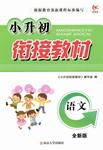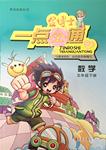题目内容
__________ the program , they have to stay there for another two weeks.
A. Not completing
B. Not having completed
C. Not completed
D. Having not completed
练习册系列答案
 学而优衔接教材南京大学出版社系列答案
学而优衔接教材南京大学出版社系列答案 小学课堂作业系列答案
小学课堂作业系列答案 金博士一点全通系列答案
金博士一点全通系列答案
相关题目
题目内容
__________ the program , they have to stay there for another two weeks.
A. Not completing
B. Not having completed
C. Not completed
D. Having not completed
 学而优衔接教材南京大学出版社系列答案
学而优衔接教材南京大学出版社系列答案 小学课堂作业系列答案
小学课堂作业系列答案 金博士一点全通系列答案
金博士一点全通系列答案